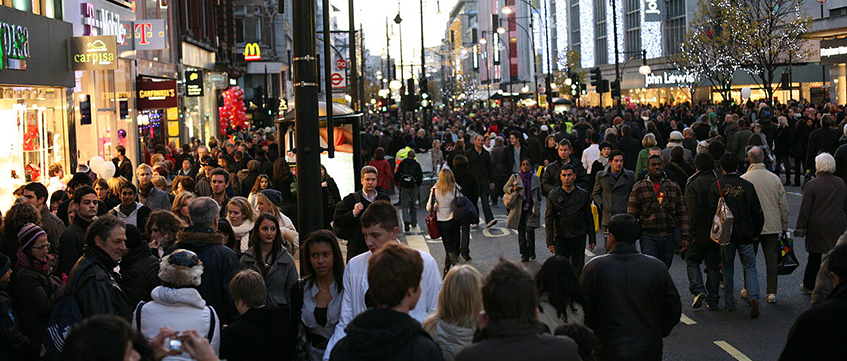Mixed fortunes for retail after occupiers suffer worst Christmas in a decade
As the retail sector’s battle against changing customer habits intensified throughout 2018, the industry braced itself for a bleak festive shopping season.
And the period was not kind to some retailers, such as Marks & Spencer and Debenhams, which each suffered a like-for-like slump in sales. The latter, which last year outlined plans to close up to 50 stores over the next few years, has begun talks with lenders and is considering new sources of funding.
However, other large retail chains, including Dunelm and Greggs, enjoyed a better-than-expected Christmas. And in a reassuring sign, there have been fewer profit warnings than predicted.
As the retail sector’s battle against changing customer habits intensified throughout 2018, the industry braced itself for a bleak festive shopping season.
And the period was not kind to some retailers, such as Marks & Spencer and Debenhams, which each suffered a like-for-like slump in sales. The latter, which last year outlined plans to close up to 50 stores over the next few years, has begun talks with lenders and is considering new sources of funding.
However, other large retail chains, including Dunelm and Greggs, enjoyed a better-than-expected Christmas. And in a reassuring sign, there have been fewer profit warnings than predicted.
Nonetheless, the BRC-KPMG sales monitor dubbed the overall period “the worst Christmas for retail since 2008”.
It found in the five weeks to 29 December, UK retail sales dipped by 0.7% on a like-for-like basis compared with the same period in 2017, when there was a 0.6% increase from the preceding year.
Paul Martin, UK head of retail at KPMG, pointed to the “continued contrast in performance between the high street and online”, despite the slowdown in online retail sales during 2018.
Next, for example, highlighted a 9.2% decline in retail sales in the two months to 29 December, compared with the same period in the previous year, which was offset by a 15.2% rise in online sales.
At Dunelm, the divide was even greater – store revenue climbed by 5.7% in the 13 weeks to 29 December, but online revenue rocketed by 37.9%.
Instore and online must join up
For Ed Cooke, chief executive of retail property organisation Revo, the results underline the vast importance of reconciling both online and offline sales.
Cooke says: “A common theme of retailer results has been a decline of store sales offset by growth online, which may be interpreted as evidence that the internet is killing the high street.
“However, this reading is too simplistic, with retailers and indeed property owners seeing online and instore as complementary rather than competitive channels.”
Cooke says it is no coincidence that Next, Dunelm, Tesco and Selfridges – all of which have invested in their portfolios to drive both instore and online sales through better customer experiences – were among the more successful retailers during the Christmas period.
“With 85% of sales touching a physical store it is not only clear our high streets and shopping centres remain an integral part of the omnichannel shopping experience, but also that we need a fairer means of taxation which reflects their changing role,” he says.
Levelling the playing field
James Lankfer, head of retail and leisure at property consultant Bidwells, says the results show the pace of change is speeding up.
He suggests that more needs to be done at the national level to reinvigorate spending power on the high street, which could involve driving new forms of residential in relevant locations or reinforcing the economy away from London.
“There are physical things we can do, from lowering rents to business rates relief to offering free parking and levelling the online playing field by taxing online retailers fairly,” Lankfer adds.
“But partly each retailer needs to find their own solution to online competition and its online offering, and that could mean opting for an experiential physical offering, or simply having less stores.”
Profit warnings
Footasylum
Next
Halfords
Retail casualities during Christmas period
HMV
Greenwoods Menswear
Steamer Trading
Blue Inc
Shuropody
Hardy Amies
Adapt or die
Unaudited sales across high street businesses may appear to have broadly defied expectations, but only show one side of the story. After all, deeper discounting activity and product returns are among the factors that will likely have affected retailer margins.
On the whole, while trading updates from the high street in the weeks following Christmas have varied wildly, they have placed fresh emphasis on what is widely known about the high street.
Retailers with strong online operations have been somewhat sheltered from ongoing turmoil, but going into 2019, dismal trading conditions will continue to knock more businesses into failure unless they can work with landlords to adapt quickly enough.
To send feedback, e-mail pui-guan.man@egi.co.uk or tweet @PuiGuanM or @estatesgazette











